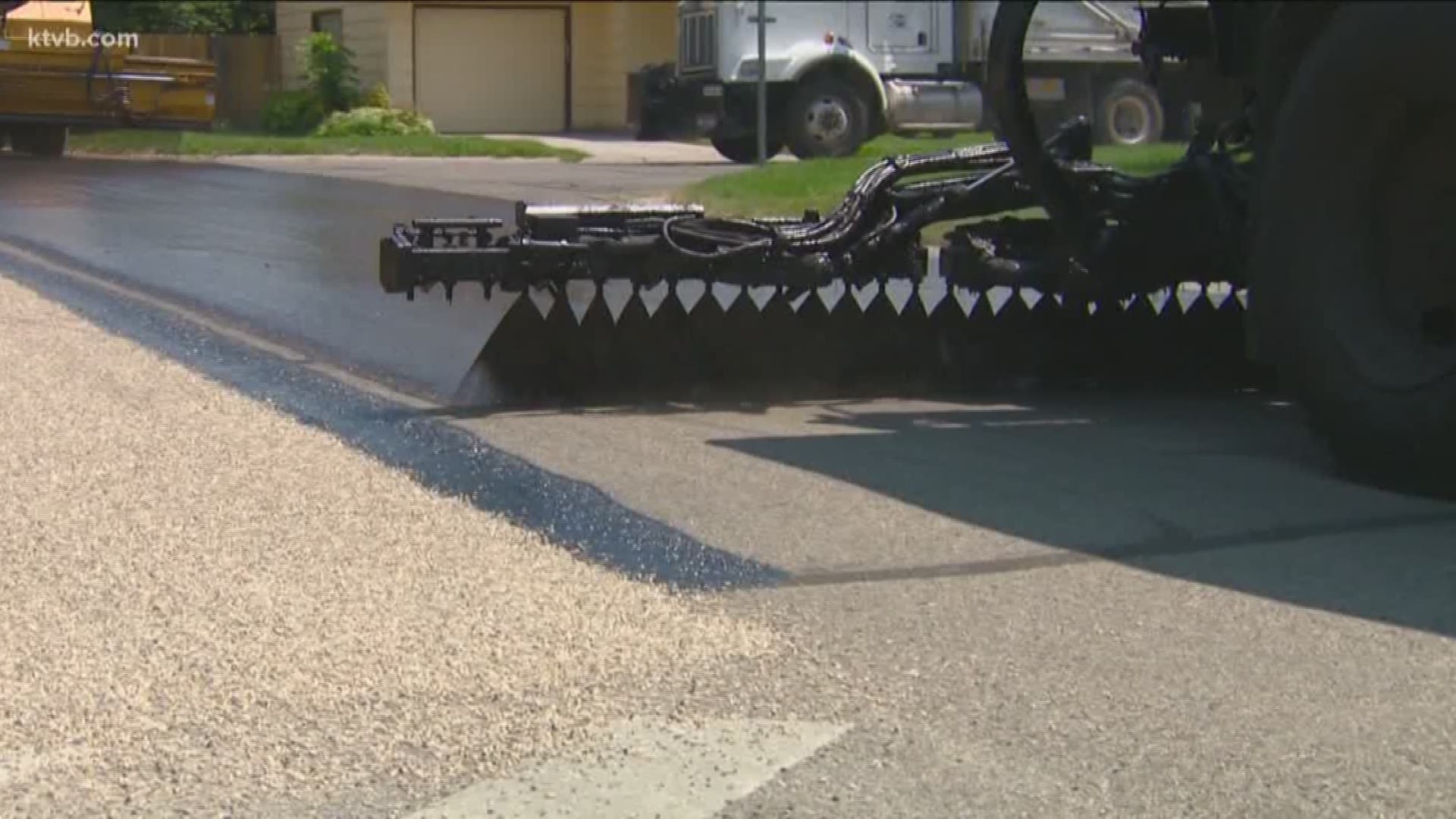BOISE — It's almost a way of life here in the Treasure Valley: every year during the summer our roads are chip sealed.
It's a necessary maintenance process, but one that frustrates a lot of drivers because of damage it can cause to cars. Many drivers are left wondering, who's responsible for the damage?
Every year without fail, rocks fly up and hit people's windshields during the sealing operations, leaving chips and spidery cracks. That's what happened to one driver who reached out the KTVB on Tuesday, wishing someone would be held accountable and questioning why the loose gravel is on the road for so long.
"It's a trying time for motorists. We understand that,” said Ada County Highway District spokesperson Nicole DuBois. "It's as common as chip sealing, are the complaints."
Chip sealing is preventative maintenance intended to protect asphalt from water and weather damage.
“That protection essentially extends the life of the road which prevents us from having to do a much more costly overlay sooner,” DuBois said.
Liquid asphalt is spread one lane at a time and immediately after, the chip spreader comes through and puts down rocks on top. Then a rubber-tire roller sets the rock into the fresh oil. Then the process moves on to the next lane. DuBois says that process itself is quick.
"We do that on purpose so that we're covering as much ground as possible and out of the way as soon as possible so we can get motorists back on the road," she explained, "But part of that is that initial coating has to cure for several days and part of that are chips that are placed over the top of that. So we put out signs that say '20 mile per hour speed limit' and 'loose gravel' to help alert motorists."
Crews can't sweep excess rock off the road until the asphalt is set up. According to their chip sealing explainer, "sweeping is done at the completion of the chip seal process to remove surplus rock from the surface. This loose rock can grind and loosen rock set in the chip seal and damage the project. Sweeping is done as soon as possible after the asphalt has set up, normally within three to seven days."
“It's a matter of the time it takes to cure the oil,” DuBois added.
“They roll over with a roller and then they leave. And then we have to deal with the aftermath until they come back,” said Ryan McAndrew, a driver whose windshield was damaged on Tuesday.
This is the part of the process that infuriates many drivers.
"On my way going to work from lunch, I happened to catch a rock to my brand new windshield," McAndrew said. "It's a brand new windshield, $500. And now it has a decent sized rock chip in it."
Thanks to a driver not abiding by the posted 20 mph speed limit signs, rocks from the road went flying.
McAndrew says he called ACHD to try to find some recourse.
“[A representative] just basically told me that once it hits the ground it is no longer their responsibility. And that if it had come outside the truck - one of their vehicles - then there is a process to go through. But as far as just riving, it's the driver's responsibility," McAndrew said.
So now he is asking, who's responsible for his windshield?
"If people receive damage from chip sealing they're certainly welcome to file a claim," DuBois said. "That goes to a third party who investigates that claim. And ultimately for ACHD to be held liable they would have to prove that we were negligent in our process, that something we did in our process was incorrect.
"The person who is ultimately liable would be the car speeding by him that threw the chip,” DuBois added, "If people were following the speed limit - the 20 mile per hour - we would have virtually few, if any, windshield claims.”
So now McAndrew, like many others, is left to eat that cost.
“That's money out of my pocket for something I have no control over,” McAndrew said.
Frustration is also arising over crews starting on a section then moving on to another main, high traffic area before that's finished, inconveniencing drivers.
"I don't understand why they would start an area, do it for a mile, maybe two then they don't complete it, then they jump to another main intersection or roadway and start that project," McAndrew said. "There has to be a better way of doing this. Maybe starting it then finishing it before starting another main road."
The overall message during chip seal season for drivers: slow down.
“Drivers, just heed the speed limit. It's 20 miles per hour,” McAndrew said.
The final step is fog sealing which, according to the highway district's website, helps retain any remaining rock, control dust and provide a clean surface for new pavement markings. It is a separate process that follows sweeping by up to three weeks .
Visit this page for all of ACHD's Chip Seal 2018 information.
ACHD wants you to try to use alternative roads if possible. You can plan ahead by checking their interactive map online updated every day.

